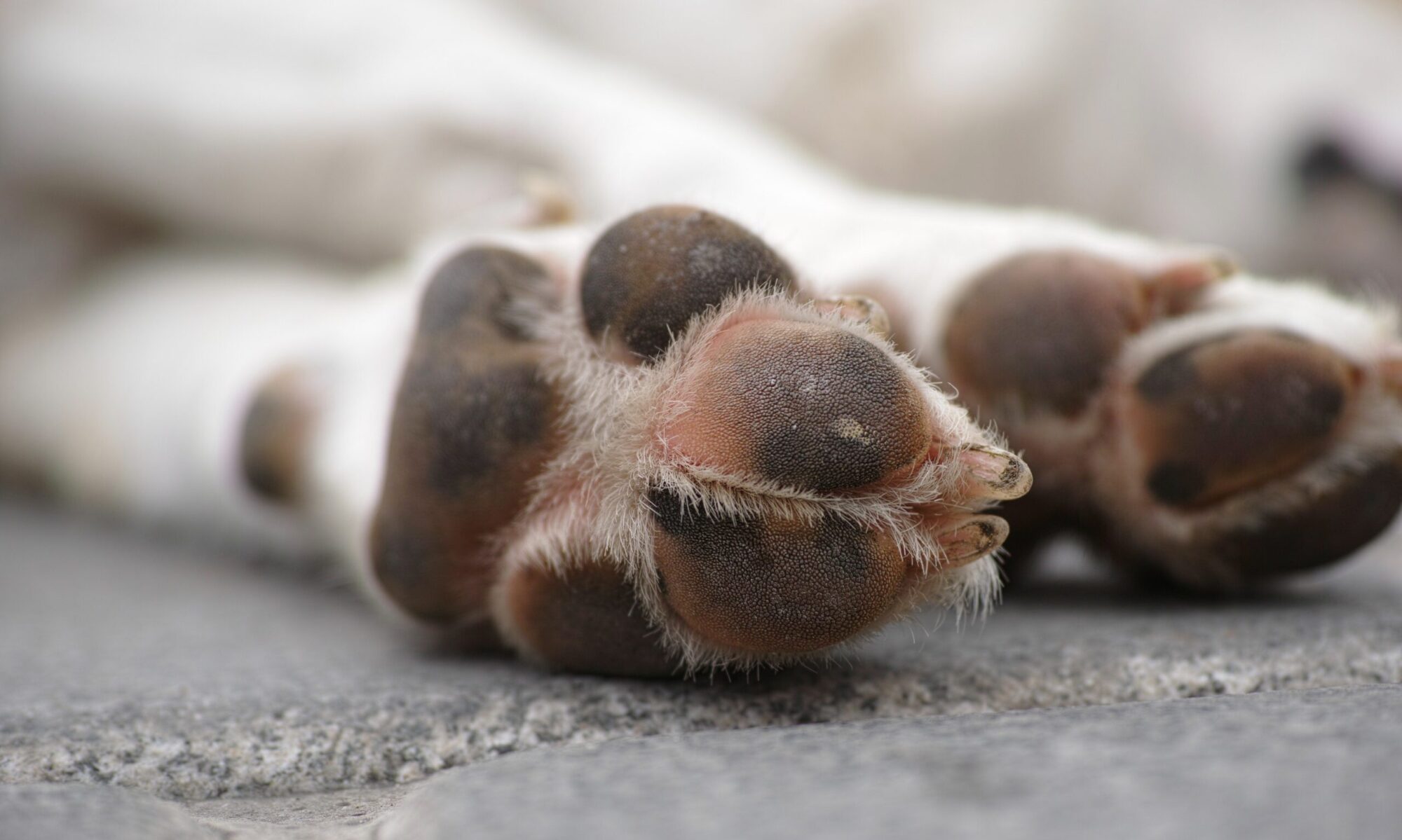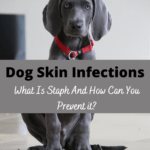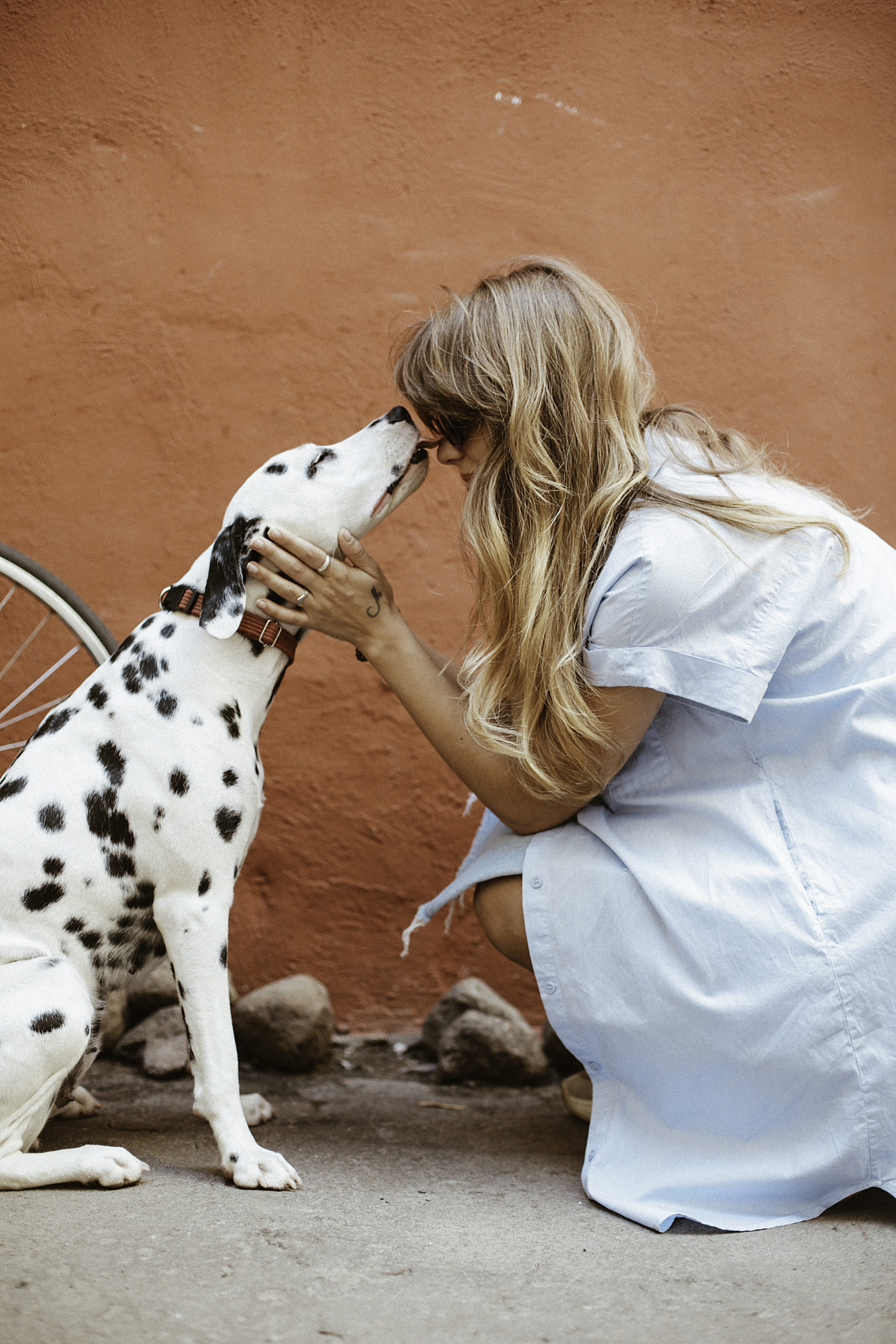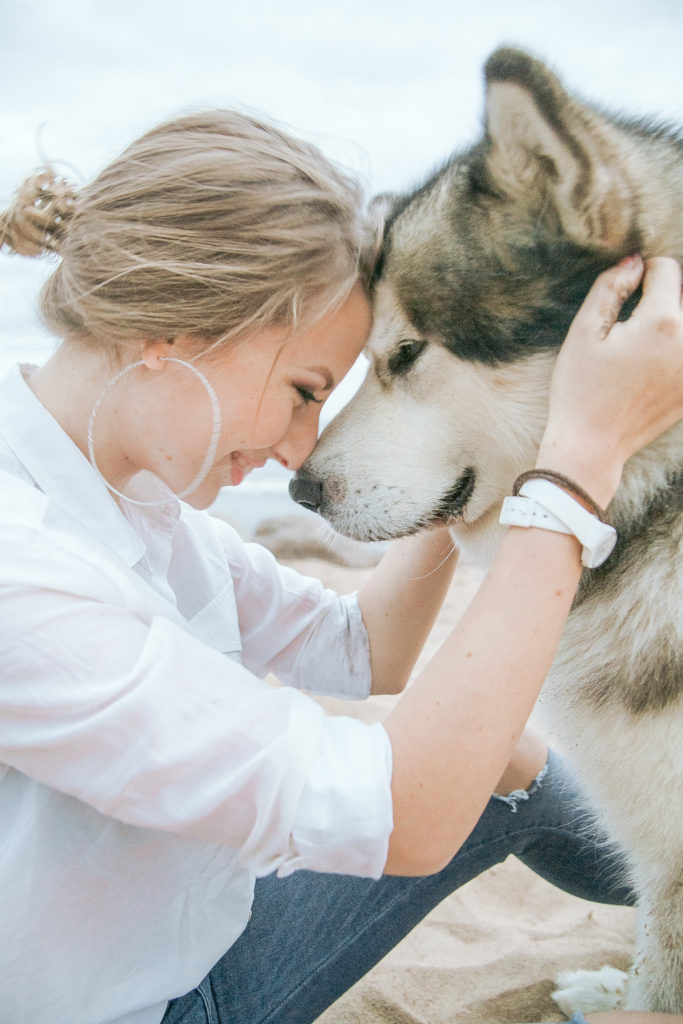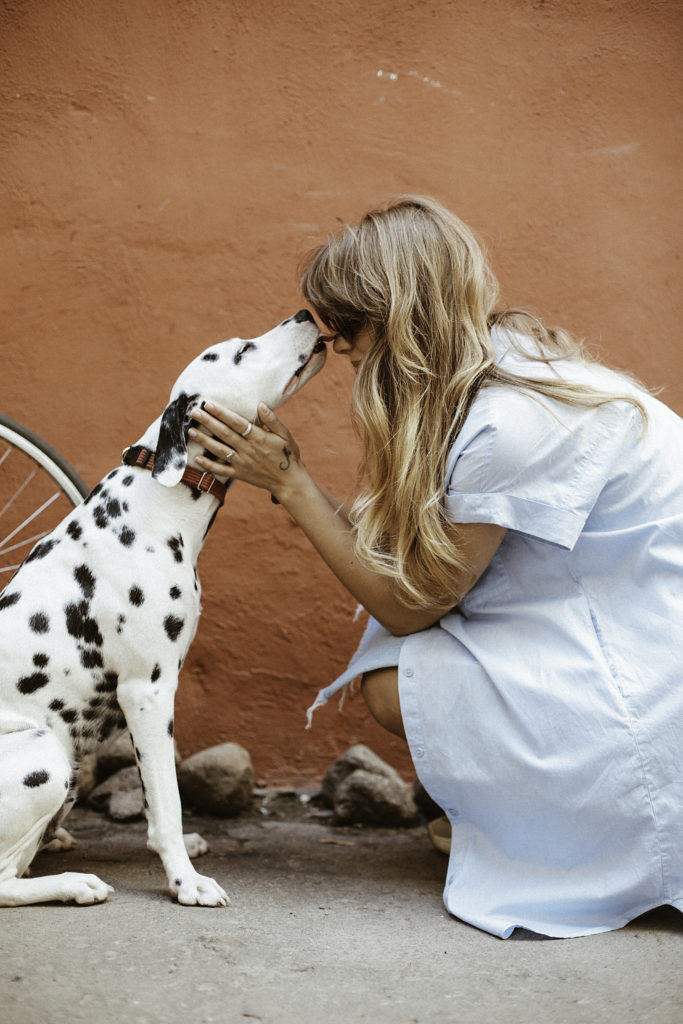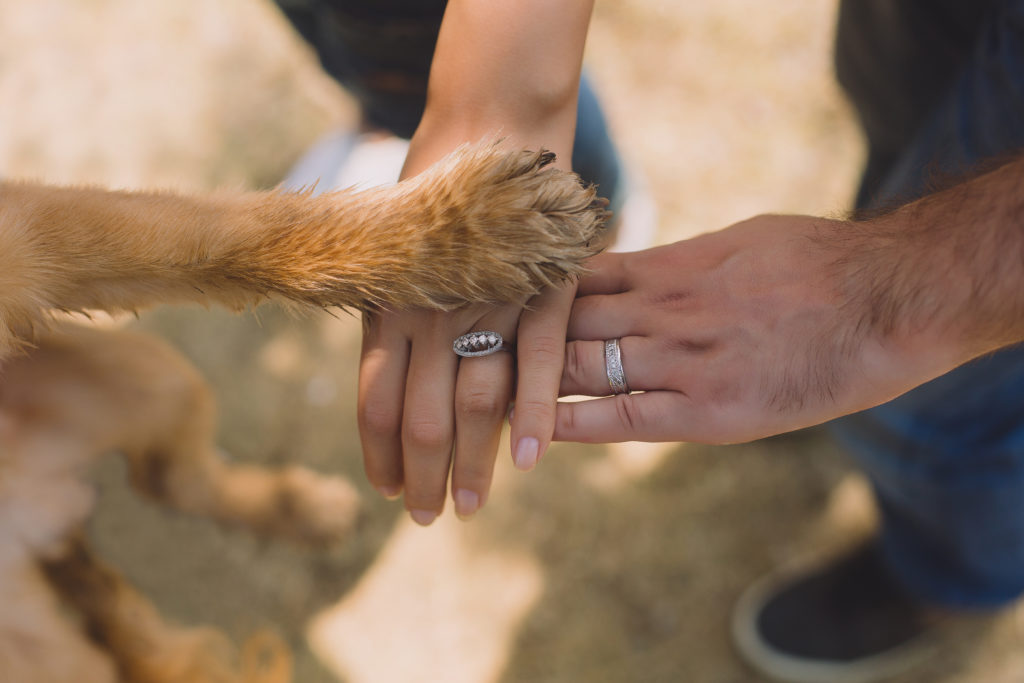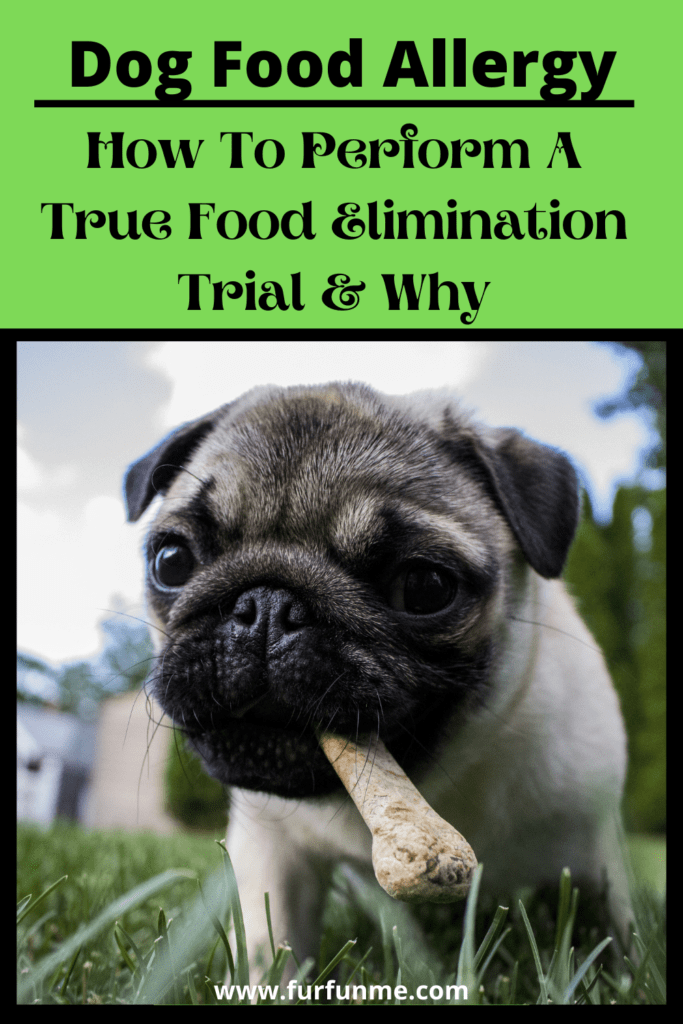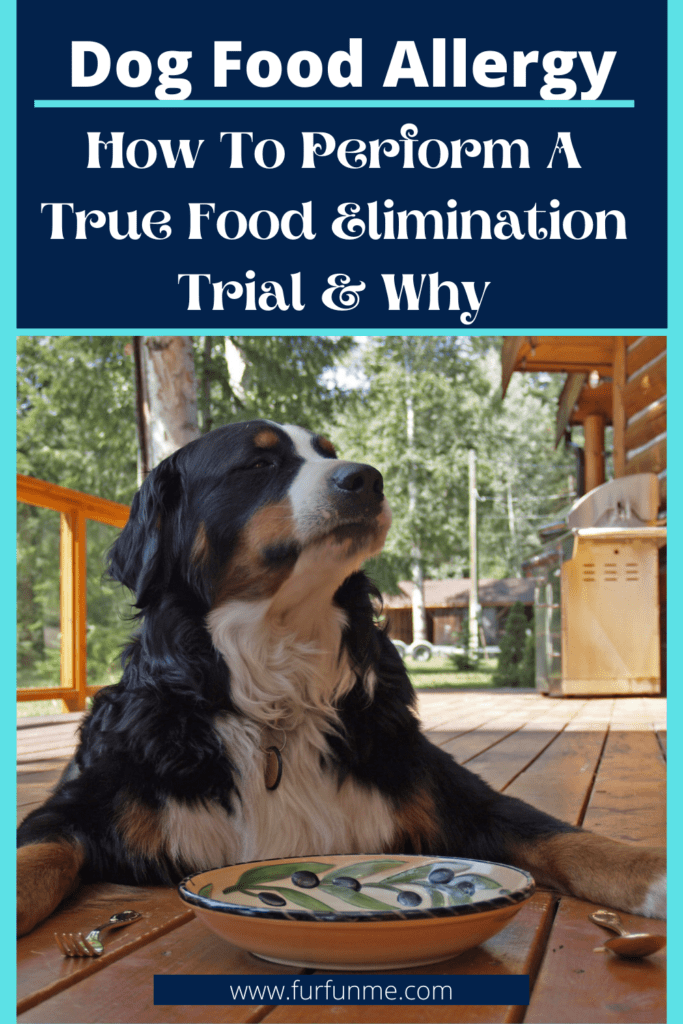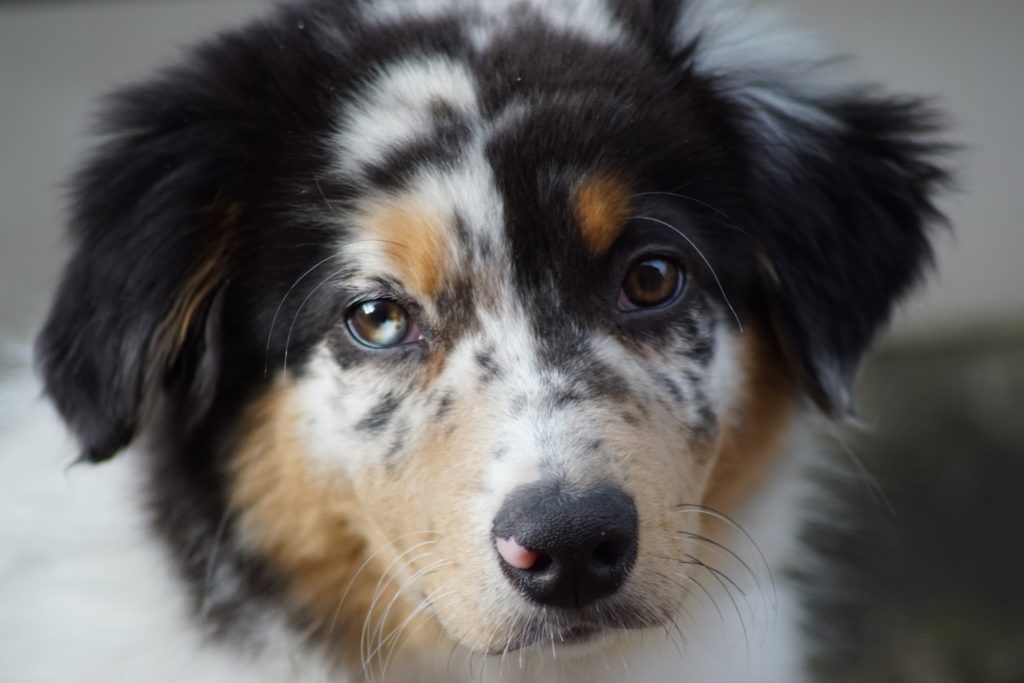What is staph? what do you do about it? and better how can you prevent it in the future. See my dog skin staph infection tips in this post
You’ve been to the vet or suspect your dog has a skin infection. Staph infection is likely, but can’t be confirmed without cytology by your vet.

Dog Skin Staph Infection – What Is It?
Staph is short for Staphylococcus a type of bacteria. These bacteria often live on the skin around the mouth, nose, bum, and genitals. Staph can be identified by your vet or pathologist via cytology.
Cytology Is when samples are taken from the skin, often with the use of sellotape. The tape is pressed onto the skin surface and then pulled away, collecting the cells sitting on the skin surface.
Once collected these tapes are then examined by your vet or pathologist under a microscope. It is there that they can be identified as different types of bacteria, yeasts, inflammatory cells, and even cancer cells.
So How Does My Dog Get A Staph Infection?
As staph is living on the skin it is only when the skin surface is broken and a wound is formed that it enters and causes an infection.
It’s not only injuries that can cause these types of wounds/broken skin, the skin surface can be broken via multiple scenarios.
A common one is self-trauma from the dog itself. If a dog is itchy, or suffering from skin problems. Then it is the chewing, licking, and scratching from the dog itself that causes wounds/broken skin. Then allowing the bacteria on the skin surface in and thus causes an infection.

Like Us On Pinterest & Facebook Help Us Help Other Owners
Dog Skin Staph Infection Prevention And Tips
So how can I prevent my dog from getting a staff infection?
If your dog injures itself, causing a wound, try and keep the wound clean. Using dog-friendly topicals. Talk to your vet about what’s available. Crating a doggie wound box or first aid kit is recommended.
Also if the wound starts to look infected go to your vet sooner rather than later. Waiting until an infection is deep and festering takes a lot more trouble than getting it sorted earlier.
My Dogs Wounds Are Cause By Self Trauma? What Should I do?
Self-trauma wounds are trickier to prevent. I have written an extensive selection of dog skin problems, conditions, and what to do about them.
You can find them all here: Problem Dog Skin
The use of t-shirts, booties, and e-collars can be helpful short term. However long-term management of your dog’s underlying skin condition is what needs to be addressed. Consider seeing an Animal Dermatologist near you and booking a skin assessment.
If your dog is self traumatizing it is most likely a skin problem that needs addressing. The key is to find the cause of the problem. The infections are only a secondary problem to the main issue which is a skin condition.
Common skin conditions include atopic skin disease, food allergies, and flea or parasites. You can read more about common skin conditions here.
- Dog Skin Staph Infection Information And Tips
 What is staph? what do you do about it? and better how can you prevent it in the future. See my dog skin staph infection tips in this post You’ve been to the vet or suspect your dog has a skin infection. Staph infection is likely, but can’t be confirmed without cytology by your vet. …
What is staph? what do you do about it? and better how can you prevent it in the future. See my dog skin staph infection tips in this post You’ve been to the vet or suspect your dog has a skin infection. Staph infection is likely, but can’t be confirmed without cytology by your vet. …Continue reading “Dog Skin Staph Infection Information And Tips”
- Dog Skin Lumps 3 Types That Are Benign – Not Cancer.
 Following my post on dog skin cancers, I decided it would be nice to link and point out that not all dog skin lumps are cancer. Some lumps are benign and less harmful than a skin cancer. Different Types Of Benign Lumps Lipoma Lipomas are formed from excess fatty tissues. These dog skin lumps form …
Following my post on dog skin cancers, I decided it would be nice to link and point out that not all dog skin lumps are cancer. Some lumps are benign and less harmful than a skin cancer. Different Types Of Benign Lumps Lipoma Lipomas are formed from excess fatty tissues. These dog skin lumps form …Continue reading “Dog Skin Lumps 3 Types That Are Benign – Not Cancer.”
- Dog Skin Cancer – The Different Types And How Serious Are They?
 Dog skin cancer – First of all, if you are worried your dog might have skin cancer, please make an appointment with your vet to get it checked. Cancer is not something you want to sit around on. Cancer is one of the leading causes of death in dogs over 10 years old. However, dog …
Dog skin cancer – First of all, if you are worried your dog might have skin cancer, please make an appointment with your vet to get it checked. Cancer is not something you want to sit around on. Cancer is one of the leading causes of death in dogs over 10 years old. However, dog …Continue reading “Dog Skin Cancer – The Different Types And How Serious Are They?”
- Dog Skin Conditions – 5 Serious Skin Problems Your Dog Can Have.
 Dog skin conditions, there are so many skin disease’s that this post could cover but it would have been very long. So I decided to pick 5 that I felt where important and also potentially more common than others. This list is based on my knowledge and experience from working in a special interest small …
Dog skin conditions, there are so many skin disease’s that this post could cover but it would have been very long. So I decided to pick 5 that I felt where important and also potentially more common than others. This list is based on my knowledge and experience from working in a special interest small …Continue reading “Dog Skin Conditions – 5 Serious Skin Problems Your Dog Can Have.”
- Tips To Manage A Dog With Skin Problems.
 So you have a dog with skin problems? whether its chronic, seasonal, or random.I have 5 tips on how you can better manage your dog with skin problems. Dog with skin problems? 5 tips to manage it long term. #1 – Wash Them Less. That’s right washing less is better especially a dog with skin …
So you have a dog with skin problems? whether its chronic, seasonal, or random.I have 5 tips on how you can better manage your dog with skin problems. Dog with skin problems? 5 tips to manage it long term. #1 – Wash Them Less. That’s right washing less is better especially a dog with skin …
